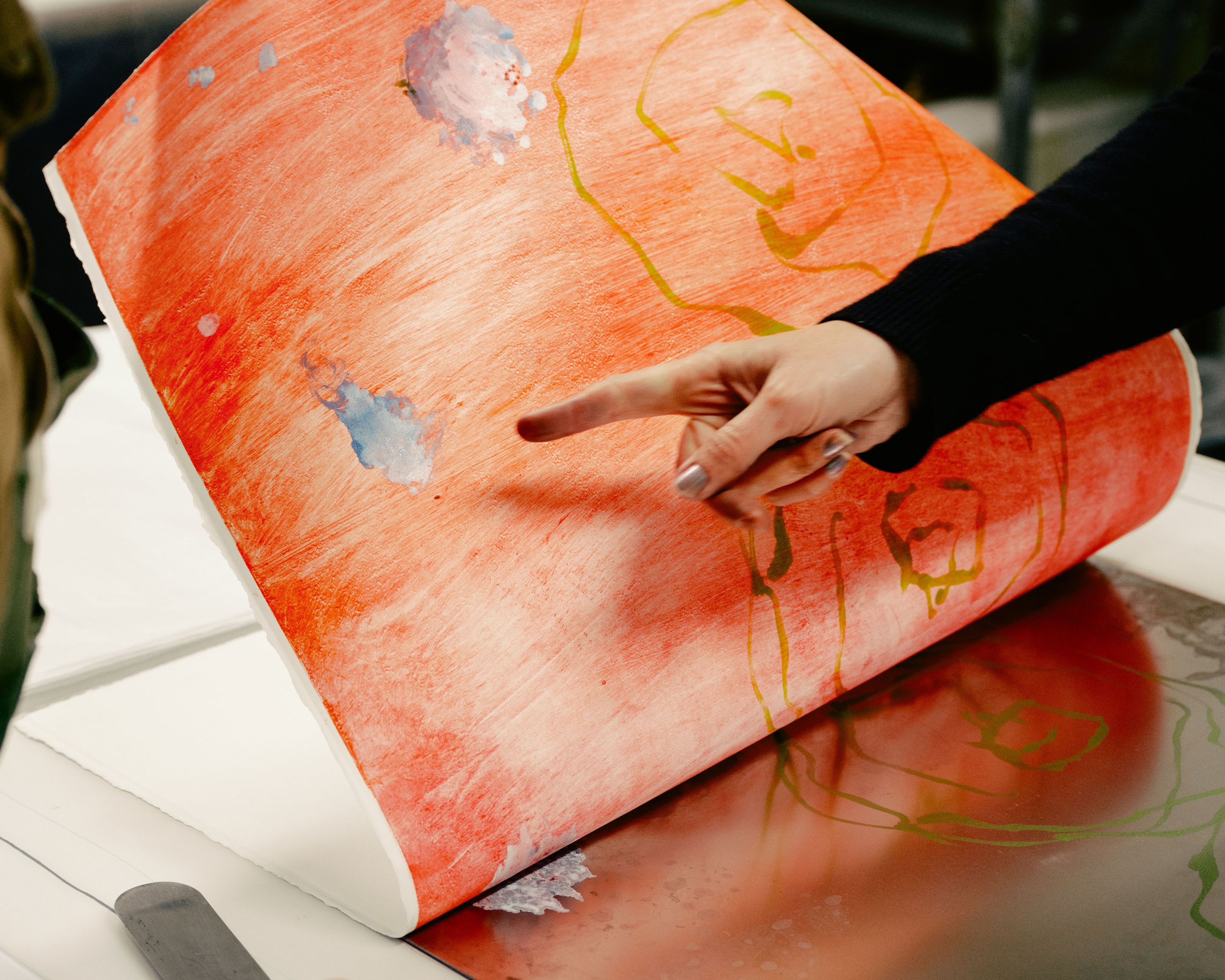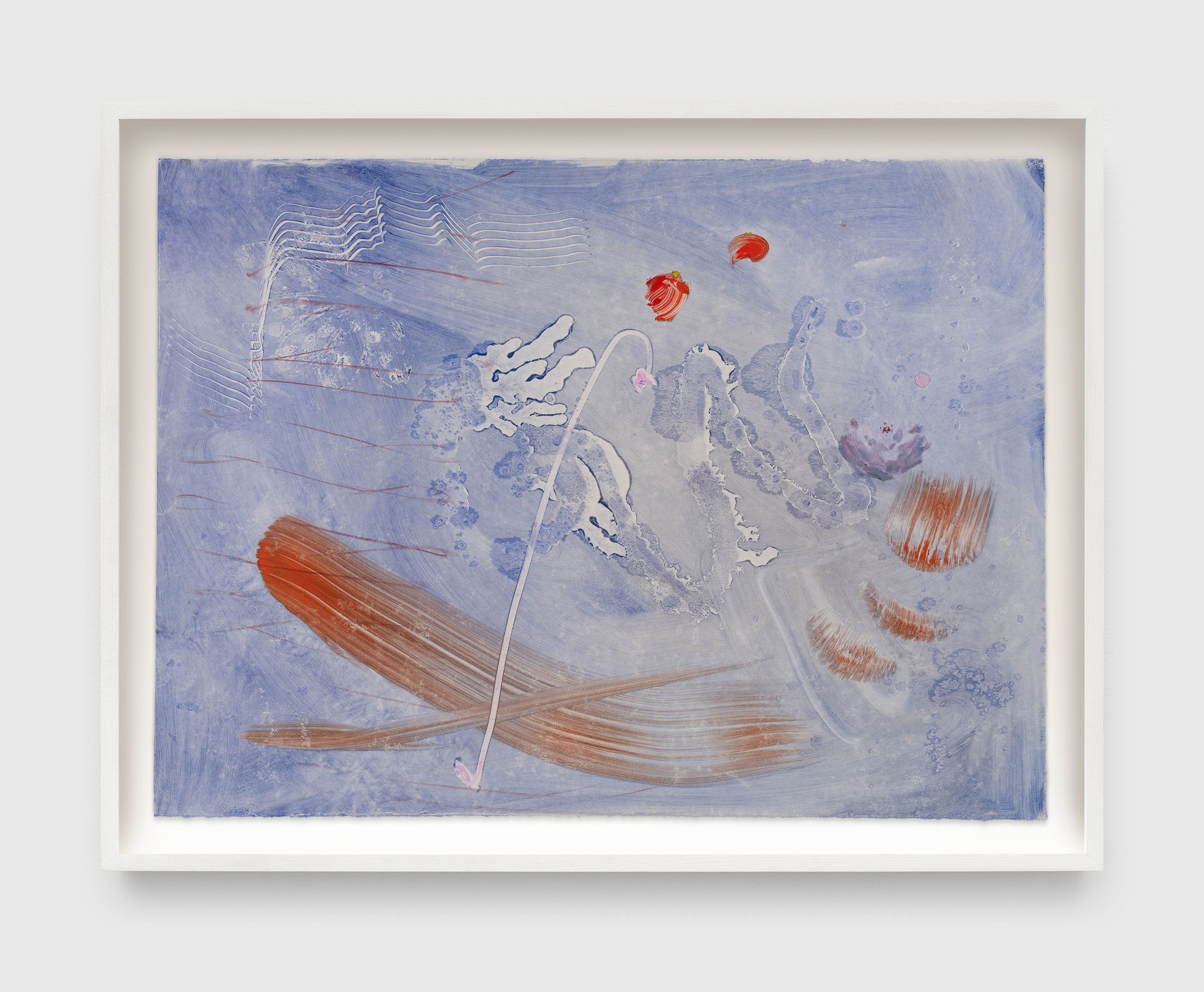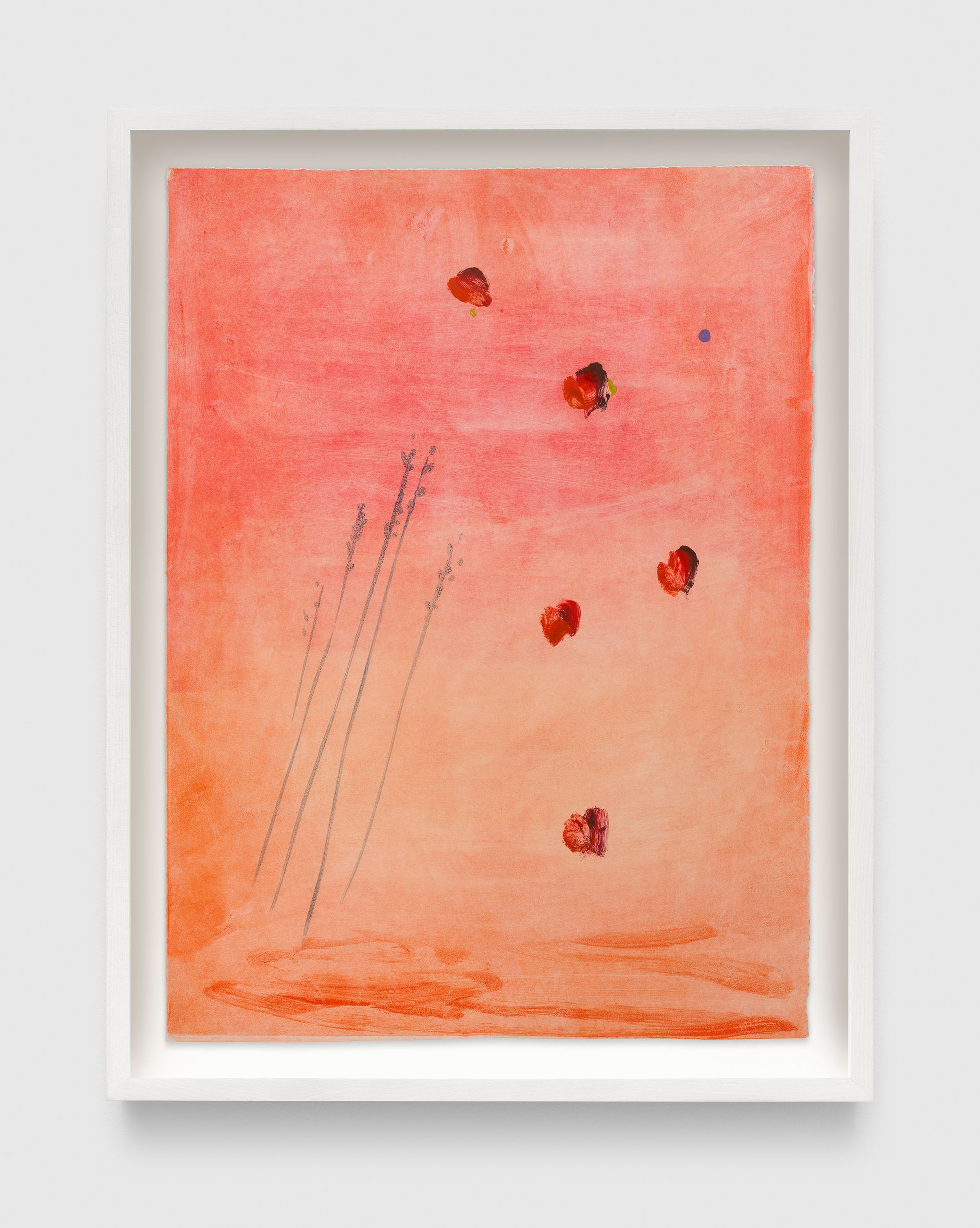Online Exhibition
Emma McIntyre: If not, winter
Interested in artworks?

The workshop at Farrington Press, a print studio that sits at the base of a functioning observatory in the high desert. Photo by Daniel Dorsa
McIntyre applies an oxidation solution to a copper plate, which, when dry and transferred to a pre-soaked sheet of paper, results in a vivid turquoise hue.
Simon pulls back the paper to reveal the printed image. The striking burnt-orange hue that dominates this work was created by transferring the pigment from a rusted steel plate directly onto the sheet.
“I’ve never been that deep in the desert. It was spectacular and totally isolated.… There’s lots of rusty cars, broken-down machinery, rusty sheds. It was quite cool because Kyle honed in on the fact that I use rust in my work and was really interested in it.”
—Emma McIntyre

McIntyre and Simon working outdoors. Photo by Daniel Dorsa

McIntyre reviews one of her prints while still on the press to gauge whether she’d reached the desired outcome. Photo by Daniel Dorsa
Informed by the distinct desert topography in which they were created, the works pull organic motifs from McIntyre’s painting practice, most notably the continued gestures toward landscape and the flower.

Installation view of works by Emma McIntyre from If not, winter, David Zwirner, New York, 2024
View the Works in Person in New York

Monotypes rest on the studio’s drying rack. Photo by Daniel Dorsa
“If not, winter is taken from a fragment of a poem by Sappho, and is also the title of a book of translations of Sappho poems by Anne Carson. I like its fragmentary nature, opacity, and the reference to the seasons.”
—Emma McIntyre

McIntyre paints a flower motif directly on a steel plate with the oil-based ink she uses in her paintings. Photo by Daniel Dorsa

Installation view of works by Emma McIntyre from If not, winter, David Zwirner, New York, 2024

The artist outlines a peony rose, a motif she often uses to “punctuate” her compositions. Photo by Daniel Dorsa
“Often, it was about getting the painted line in somehow, which is something I find fascinating about printmaking. You can really pick up the brush stroke if you get it right. There’s a real satisfaction in getting a distinct brushmark in a print.”
—Emma McIntyre
Simon and McIntyre leaf through works in progress in the print studio.
“Coming back to the studio, there’s been a shift—things have loosened up. Maybe it has to do with having to trust the process. I have a tendency to stare at a painting to figure out what to do next. This experience made me want to spend more time just going for it, getting the paint down, and realizing I have subsequent layers to figure things out.”
—Emma McIntyre

Inquire About Works by Emma McIntyre











